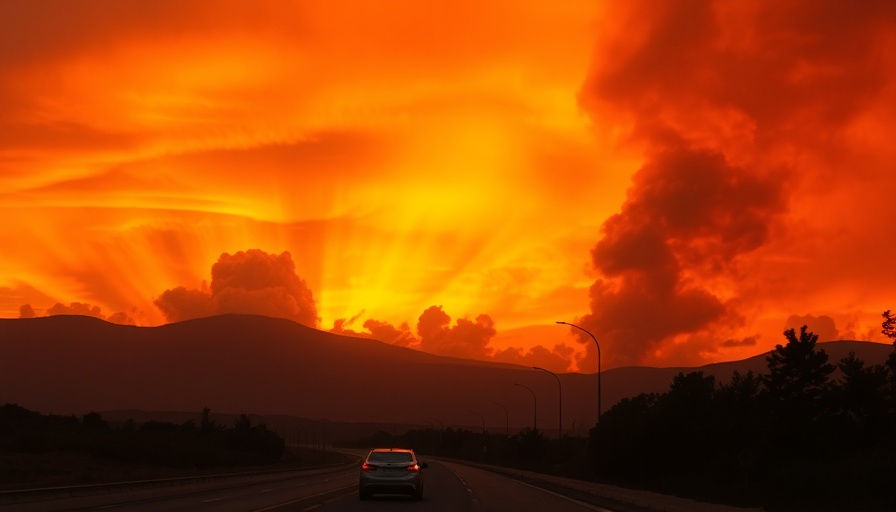
Wildfire in San Jacinto County: The Current Situation
A raging wildfire in San Jacinto County has expanded to a staggering 2,000 acres and remains only 10% contained. The fire has prompted mandatory evacuations in nearby communities as emergency responders scramble to combat the flames. As the fire continues to grow, local officials are implementing measures to keep residents safe and informed.
Evacuations have been ordered in specific areas where residents face immediate danger from the fire. Shelters have been set up in response to the evacuations, offering refuge to those displaced by the flames. Local authorities are also coordinating with schools, leading some to temporarily close their doors to ensure safety during this emergency.
Historical Context: Understanding Wildfires in Texas
Texas is no stranger to wildfires, especially during dry seasons when conditions are ripe for flames to spread rapidly. Over the past decade, there have been several notable wildfires, including the devastating Bastrop Fire in 2011, which scorched thousands of acres and caused significant damage to homes and wildlife.
The frequency and intensity of wildfires have heightened concerns among residents and authorities alike, emphasizing the need for robust emergency preparedness plans. As climate change contributes to hotter weather patterns, Texans may face increasingly severe fire seasons, underscoring the critical importance of community resilience.
How Wildfires Impact Local Communities
The implications of wildfires extend beyond immediate threats to life and property. They can disrupt local economies, displace families, and strain public resources. When a community is forced to evacuate, businesses suffer from loss of income and a decrease in patronage, potentially leading to long-lasting economic consequences.
Furthermore, evacuations can lead to a sense of panic and uncertainty among residents. To mitigate anxiety, local governments are encouraged to communicate effectively and provide clear updates about safety protocols and recovery efforts. The emotional toll associated with evacuations cannot be overstated; many individuals may feel connected to their homes, and the fear of loss is both profound and real.
Future Predictions: Preparing for the Fire Season Ahead
As we look towards the future, predicting wildfire trends becomes essential for both residents and officials charged with emergency management. Experts suggest that proactive measures, such as vegetation management and community education programs, can significantly affect outcomes during fire incidents.
Innovations in firefighting technologies and enhanced coordination between agencies are also critical for effective response efforts. As the climate continues to shift, understanding how such changes will affect fire behavior is vital for planning and resource allocation.
Counterarguments and Diverse Perspectives
While some argue for aggressive firefighting strategies, others advocate for controlled burns as a method to reduce excess vegetation that fuels wildfires. This debate around fire management showcases a broader tension within forest and land resource management and asks communities to consider sustainable practices moving forward.
Local environmental advocates often emphasize the ecological benefits of wildfires, portraying them as natural processes that can rejuvenate ecosystems. Striking a balance between managing human safety and preserving ecological systems presents a complex challenge that requires dialogue among diverse stakeholders including scientists, local governments, and community-members impacted by wildfire risks.
Actionable Insights: What You Can Do
Community members can take several proactive steps to prepare for potential wildfires in their area. Familiarizing oneself with evacuation routes and emergency contacts can make a significant difference during a crisis. It’s also wise to have an emergency kit ready, complete with essentials such as food, water, and medications.
Furthermore, participating in local preparedness initiatives and attending community meetings can enhance one's understanding of fire safety procedures. Being informed empowers communities to respond efficiently when faced with unforeseen challenges like wildfires.
Conclusion: The Importance of Preparedness
The wildfire in San Jacinto County is a stark reminder of the dangers that can arise during peak fire seasons. By staying informed, prepared, and engaged with local emergency services and community programs, residents can support each other in overcoming adversity.
As we watch the fire's progression and await containment efforts, it is critical to emphasize community resilience and preparedness against future incidents. Each person's proactive measures can contribute to a stronger and more resilient community.
 Add Element
Add Element  Add Row
Add Row 



Write A Comment